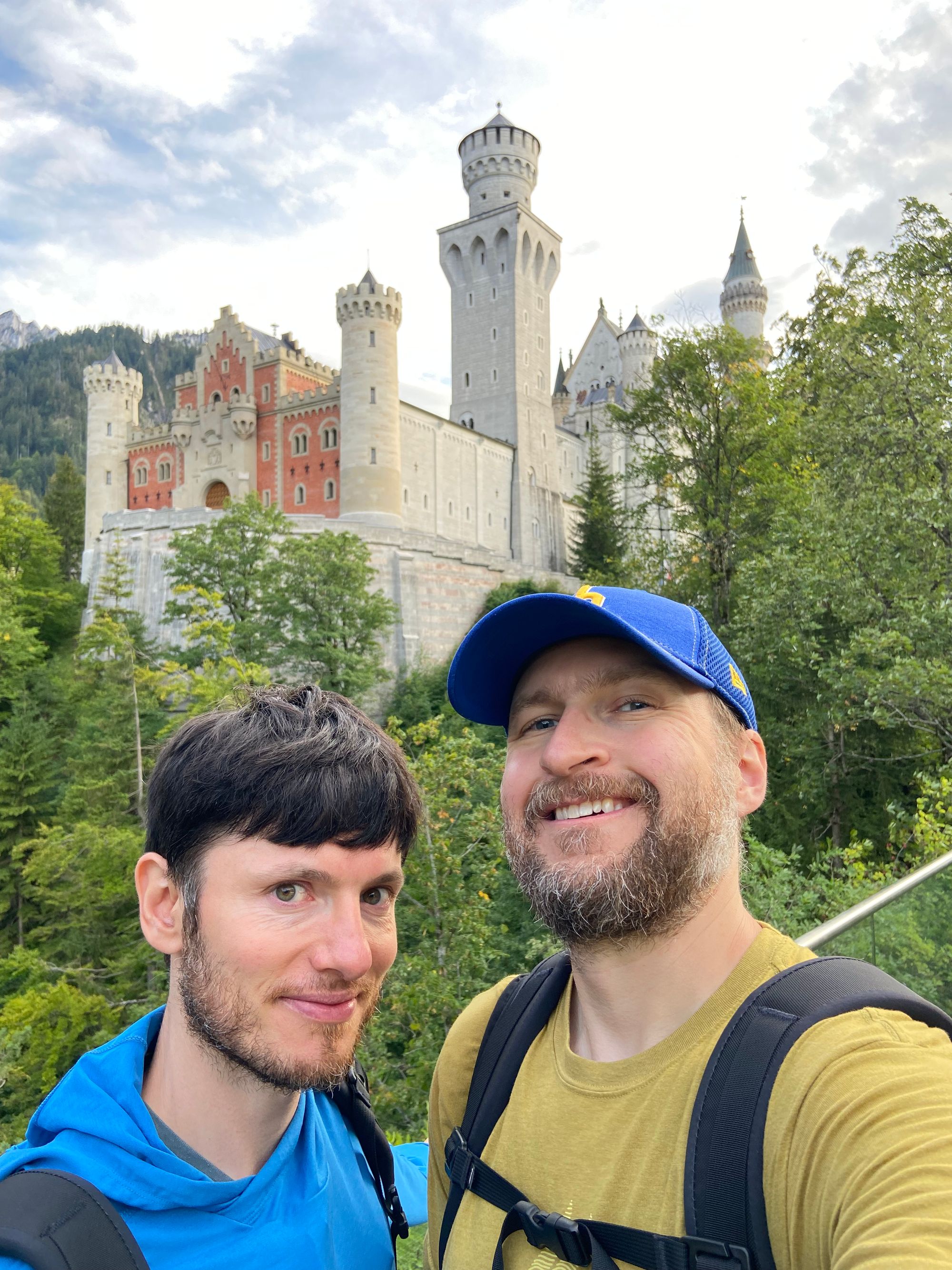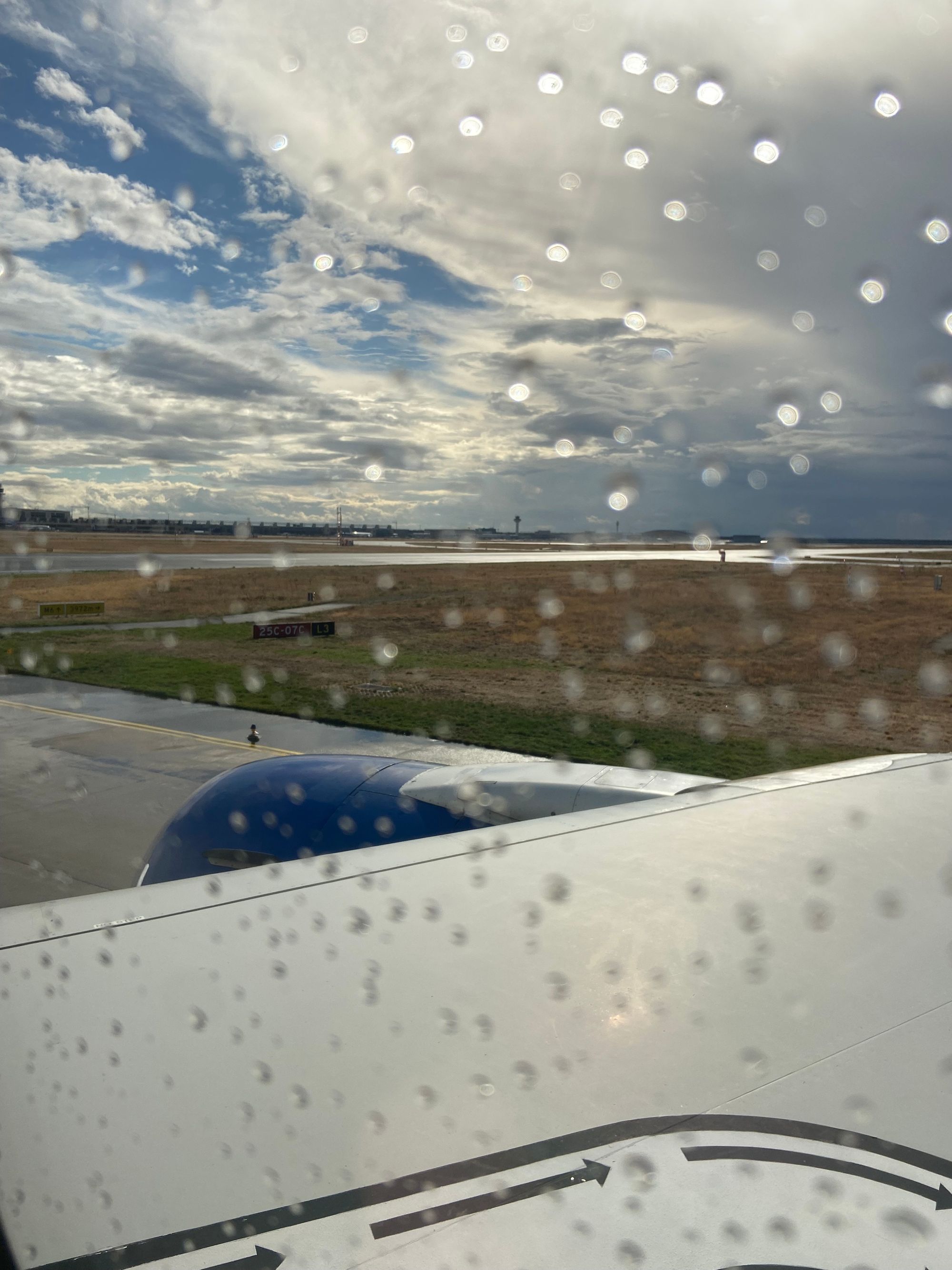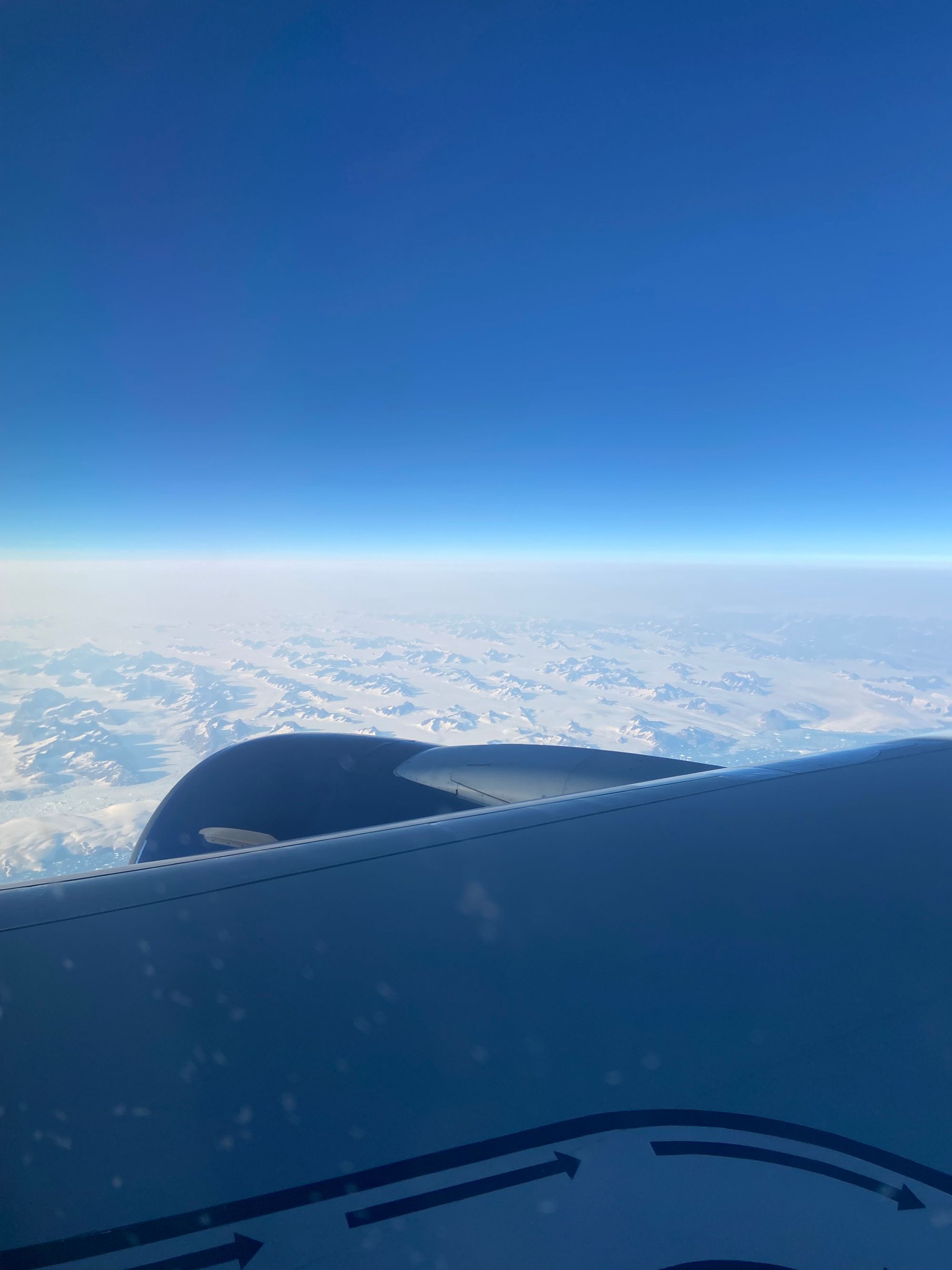Europe 2022 - Part 3: Munich and Southern Bavaria

This is the third and final part of a three-part series on our trip to Germany and Switzerland in September 2022. Part one covered Basel, Interlaken, and the Bernese Oberland and part two covered Lucerne and Zurich.
Munich
Our delayed train led to a very late check-in to our hotel in Munich, but we were very happy to find a clean, comfortable, and very stylish room waiting for us at the Schwabinger Warheit. While breakfast was not included in our (very reasonable) nightly rate, it was available for a modest supplement of €16 per person. By this point, were had learned what to expect from a classic Continental breakfast (and where that term came from!) and we were not disappointed by a good selection of eggs, meats, cheeses, Birchermuesli, fresh fruit, and baked goods.
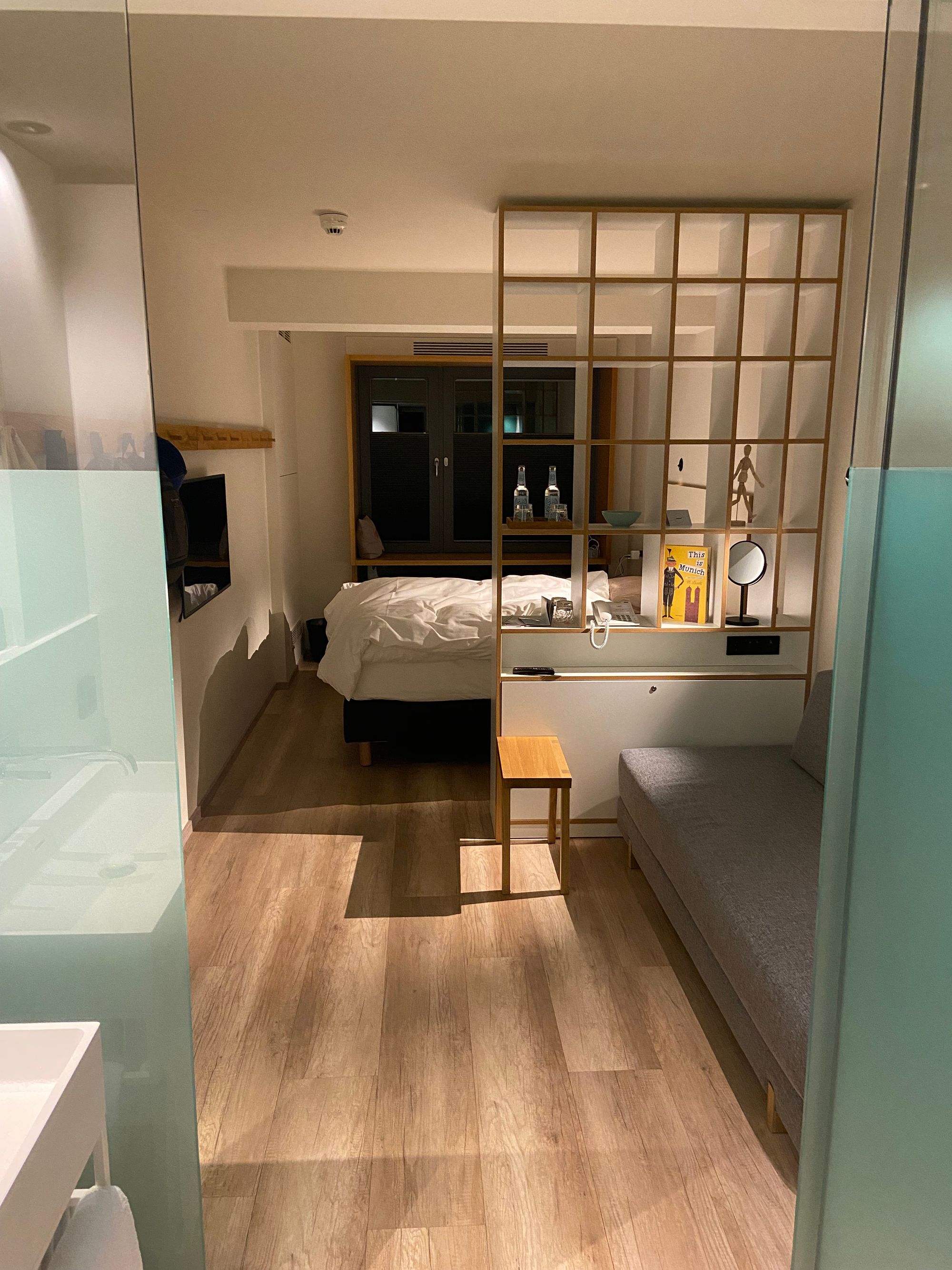
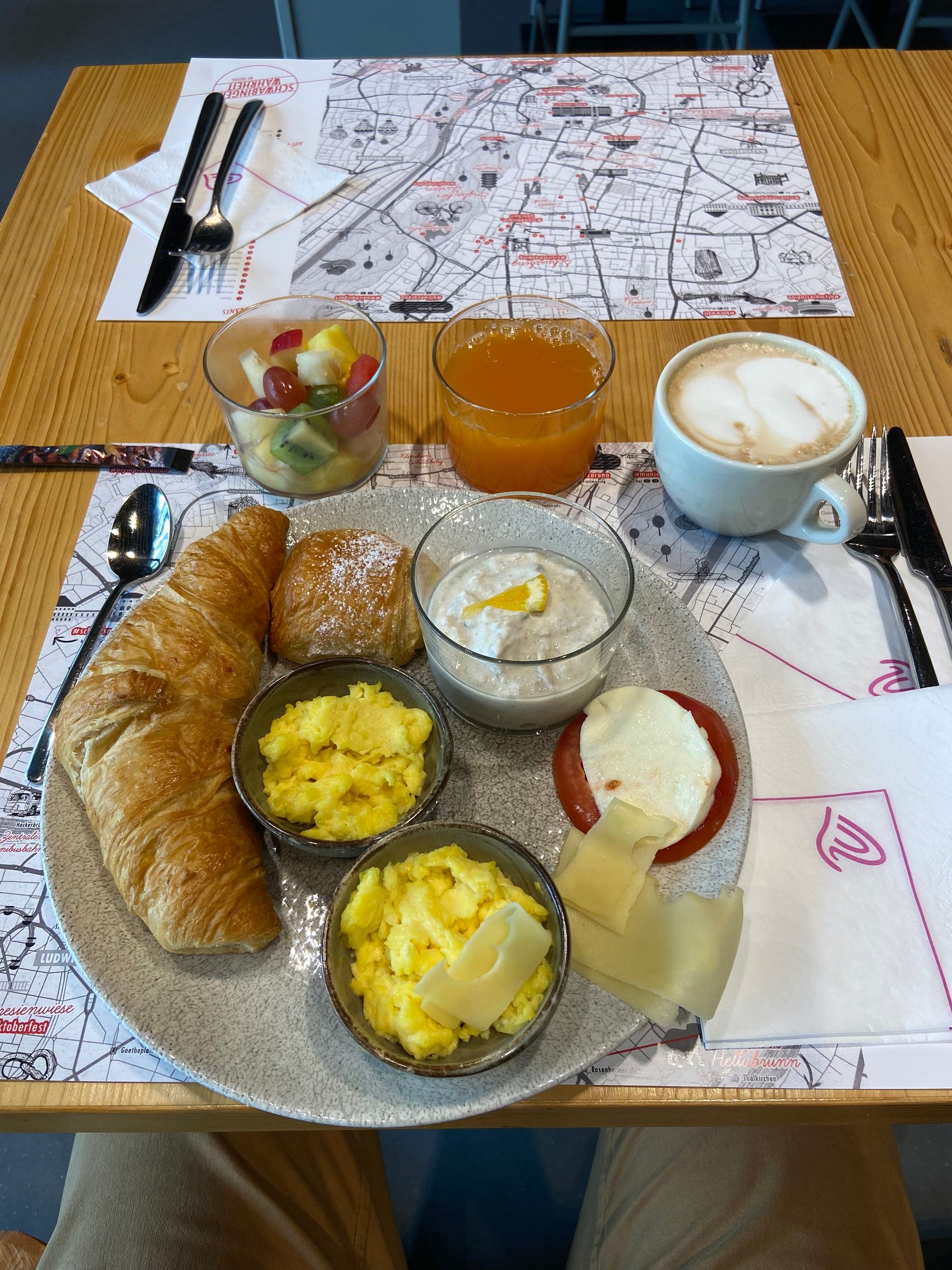
We had planned to do laundry at our hotel in Interlaken but unfortunately one of their machines was broken and so guest laundry was not available during our stay, so our first order of business in Munich was to find a laundromat. We found a nice self-service place about a 15 minute walk from our hotel, so we made our way over there and spent what was left of the morning taking care of that.
After taking our clean laundry back to the hotel, we walked over to Munich's famous Englischer Garten (English Garden) which, at over 900 acres is not only Munich's largest public park, but one of the largest urban parks in Europe! After a short (and somewhat ill-fated) ride across the park on some rent-by-the-minute e-bikes, we stopped at a small neighborhood pizza shop for a late lunch.
After lunch, we set out on foot back towards the city center. Along the way we passed by the world famous Eisbachwelle which is a standing wave formed where the man-made Eisbach River enters the southern end of the English Garden. Since at least the 1970s, the Eisbachwelle has been a popular spot for urban surfing(!) and is now recognized as one of the largest and best locations for river surfing in Europe. At one point, local authorities wanted to remove the wave due to several accidents that had occurred, but after local protests (and the installation of a large warning sign) surfing is now officially permitted.
After watching the surfers for a bit, we continued on to the Hofgarten and the grounds surrounding the Residenz München (Munich Residence) which is the former royal palace of Bavaria. We were actually more taken with the Bayerische Staatskanzlei (Bavarian State Chancellery) building (seen below) which also borders the Hofgarten.
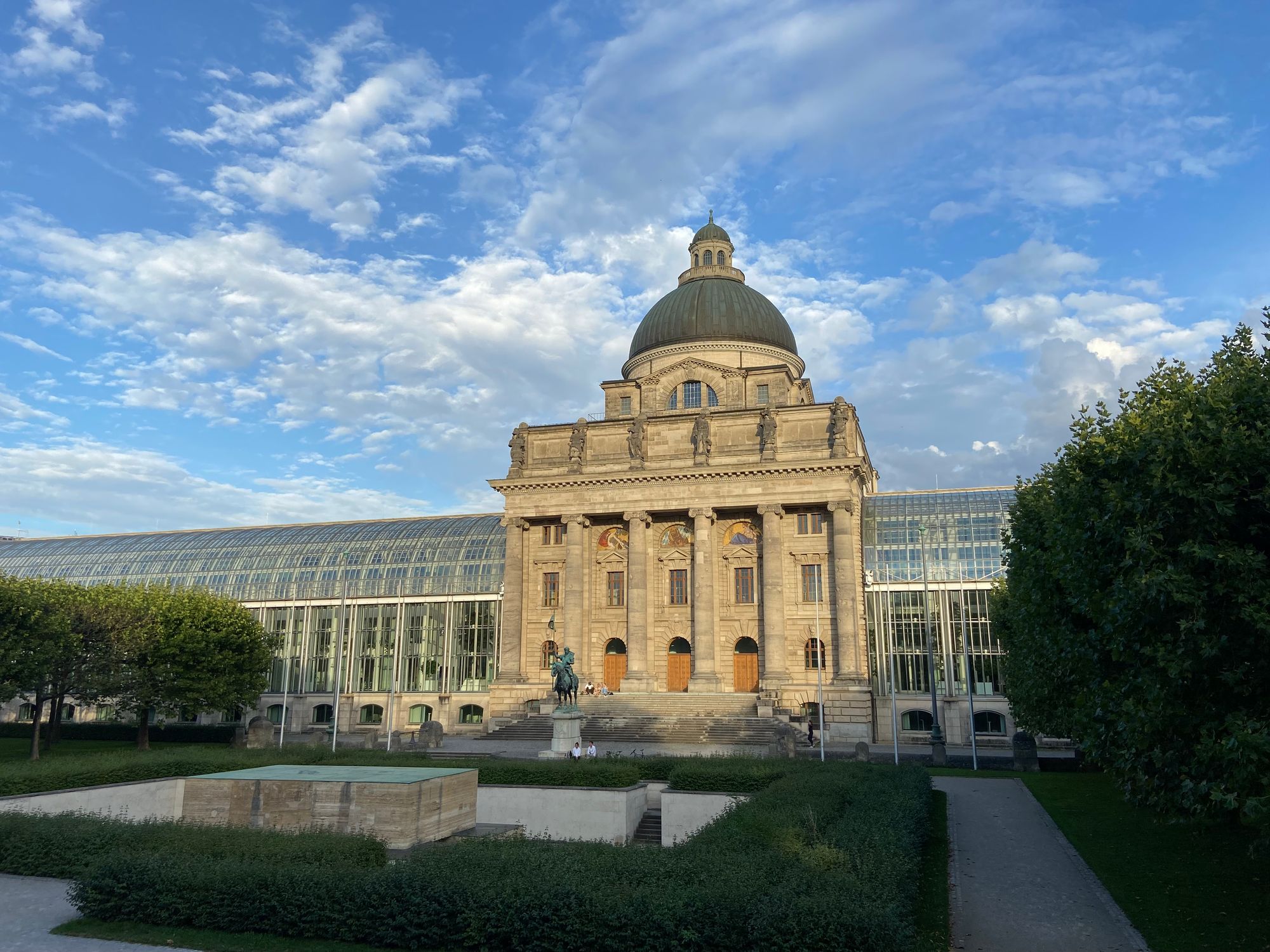
The buildings of the Munich Residence were severely damaged by Allied bombing during World War II and it took decades to rebuild them. In an effort to reduce costs and expedite the rebuilding effort, the facades of many of the buildings were greatly simplified with many architectural details simply painted on to mostly flat walls. I'm sure it seemed like a good idea at the time, but I have to imagine it takes a lot of cleaning and other maintenance work to keep up these superficial elements, but it does make for a rather unique talking point for the tour guides!
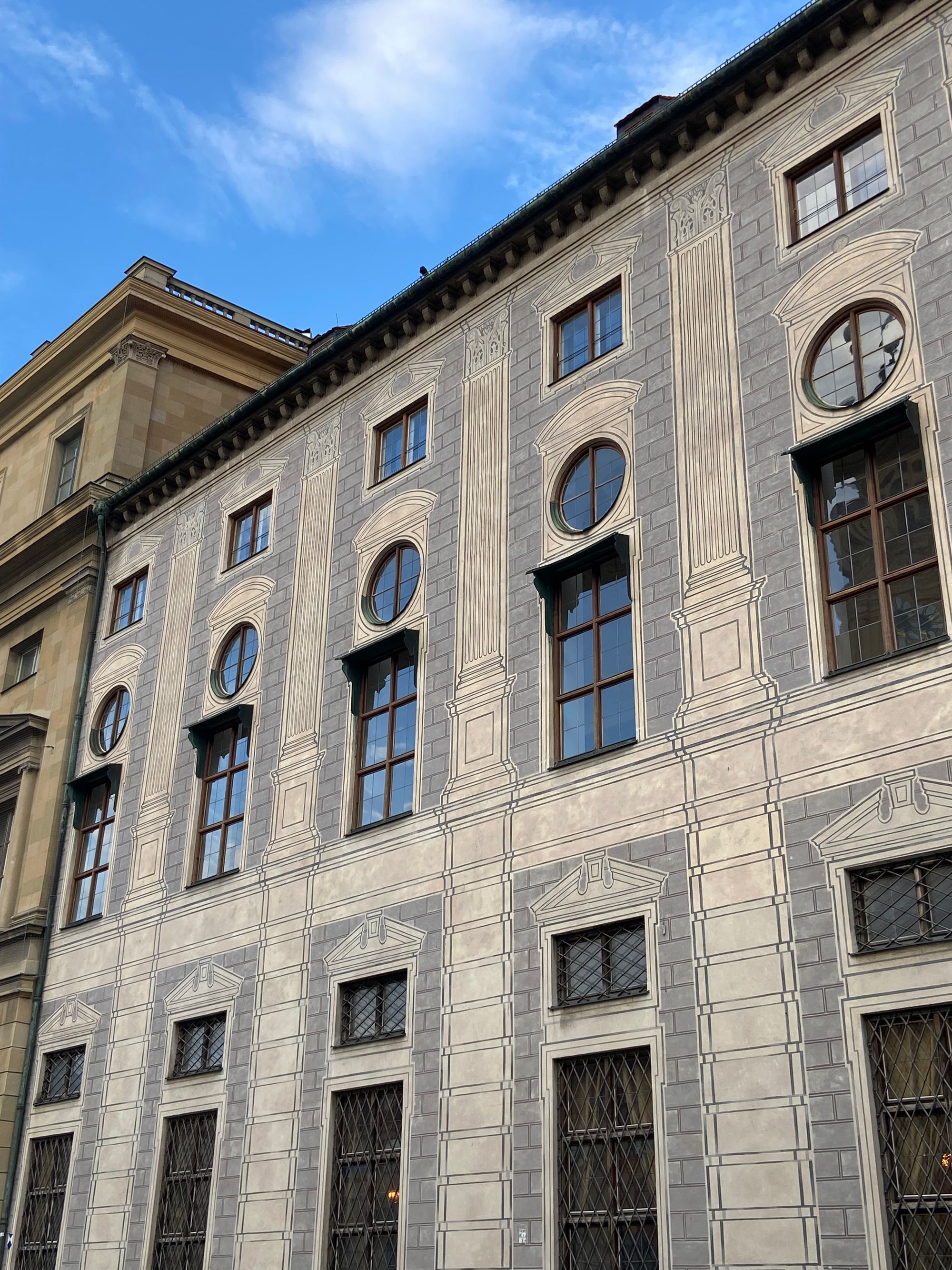
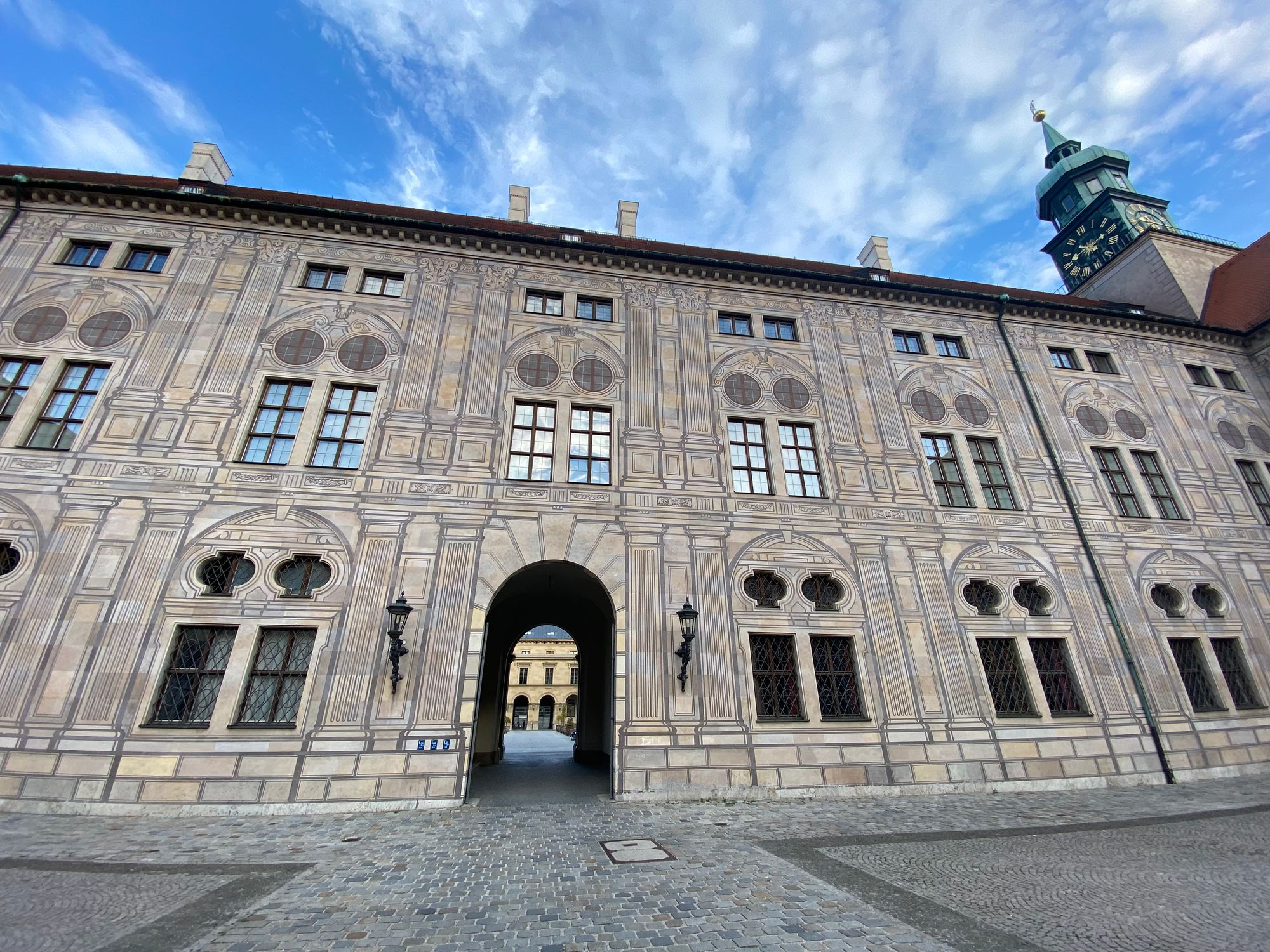
After all this walking, we were ready to take the U-Bahn back to our hotel and enjoy the pool and sauna before getting up the next day to drive down to the Bavarian alps and the world-famous castles of Ludwig II.
Southern Bavaria
We picked up our rental car from a hotel across the street from the central train station. A small, red Mitsubishi "Space Star" hatchback (with a manual transmission of course!) would be our chariot for the day.
Even though we had data plans for our phones, we had decided before the trip that we would practice our non-phone navigation skills (in case we ever end up on The Amazing Race!) and see if we could get around with just a map and our wits. We got out of Munich successfully and onto the Autobahn headed south towards the town of Oberammergau.
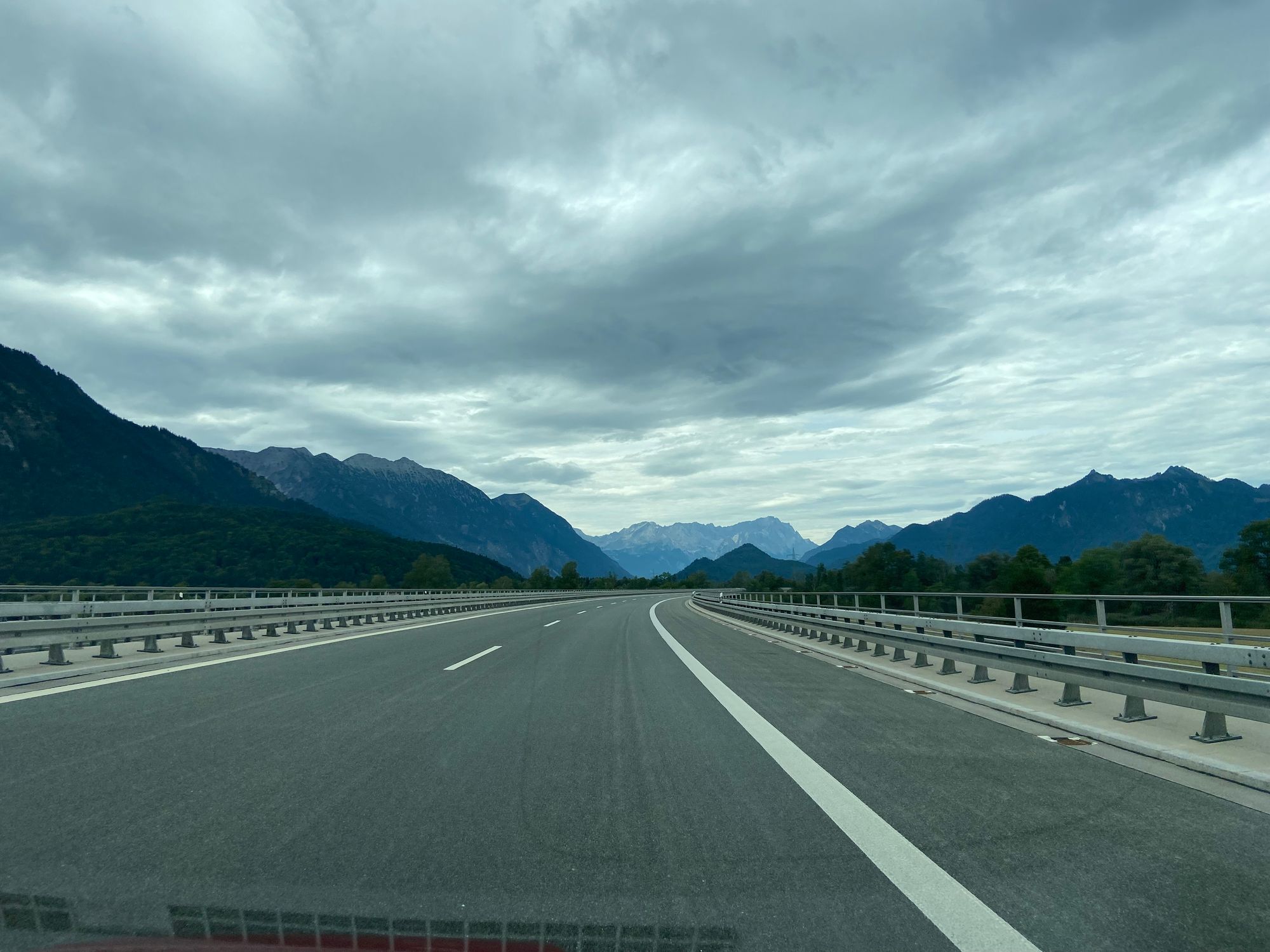
Oberammergau is world famous for it's Passion Play (aka Easter Pageant) which has been performed roughly once-a-decade since the mid 17th century! However, we were not there for the play. Our destination was the nearby Kolbensattel Alpine Coaster which was super fun and also super hard to photograph, so sadly, no pictures. (There are some cool pictures and videos if you follow the link above.)
On our way into town we had noticed a very impressive building in the nearby village of Ettal which we discovered was the Ettal Abbey monastery. We enjoyed a brief stop here to have lunch and take in the incredibly elaborate Baroque architecture.
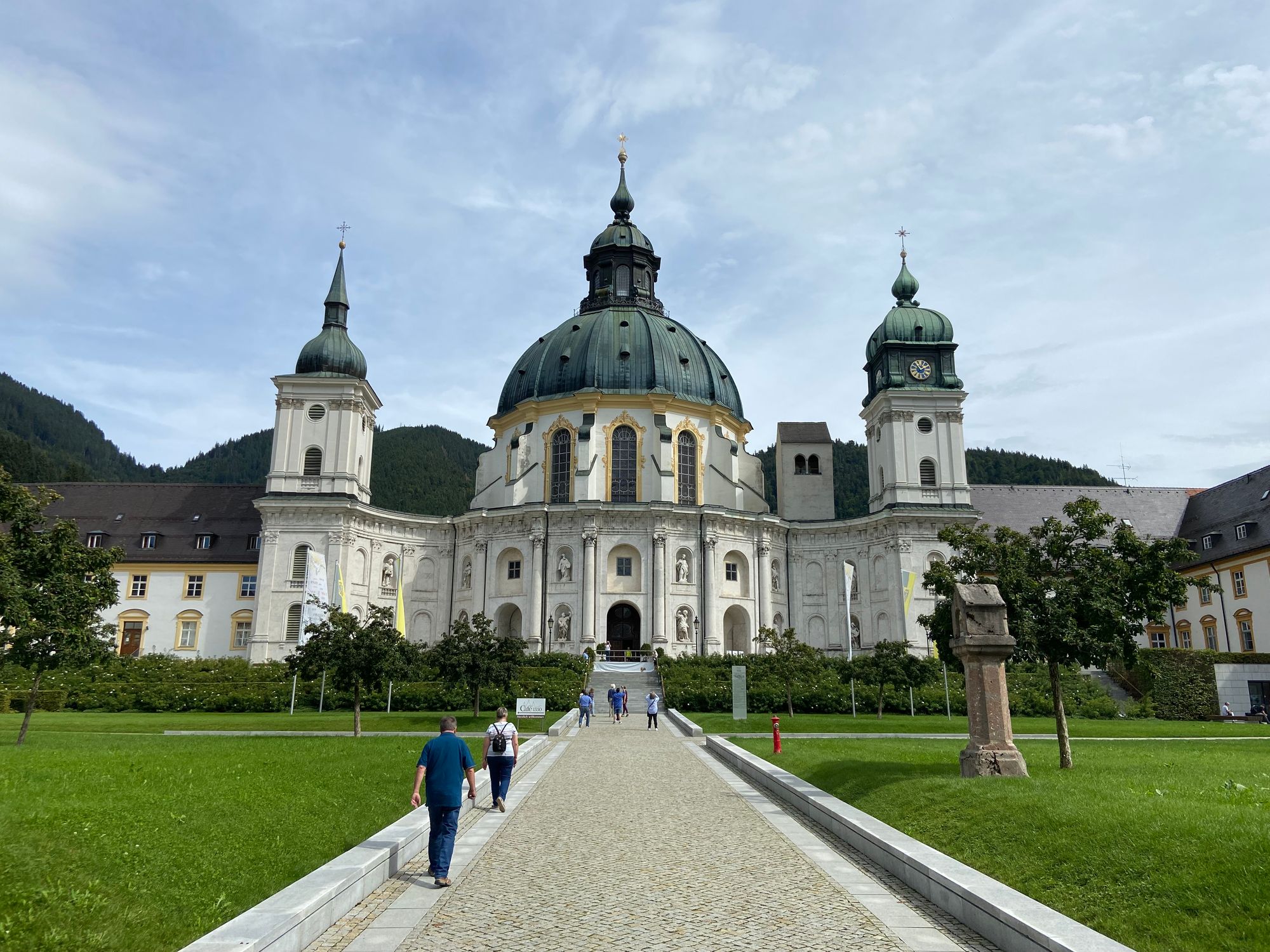
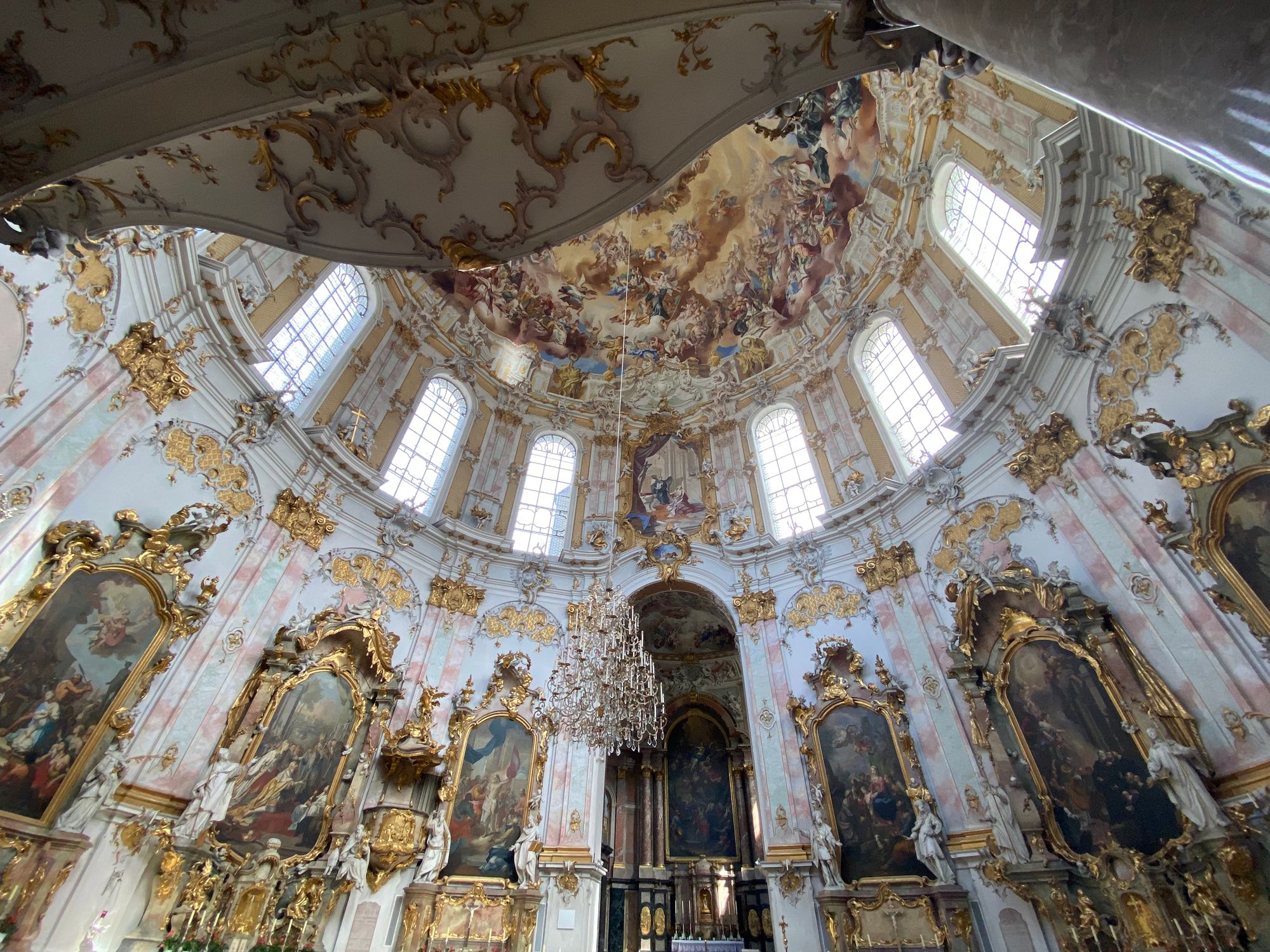
From Ettal, it was off to Linderhof Palace, the first of two castles built by Ludwig II we would be visiting that afternoon. Ludwig was King of Bavaria from 1864 until his (suspicious) death in 1886. By 1871, with German unification under Prussia mostly complete, Ludwig largely withdrew from public life and concentrated his time and money on creative projects such as building elaborate and fanciful castles in the Bavarian countryside.
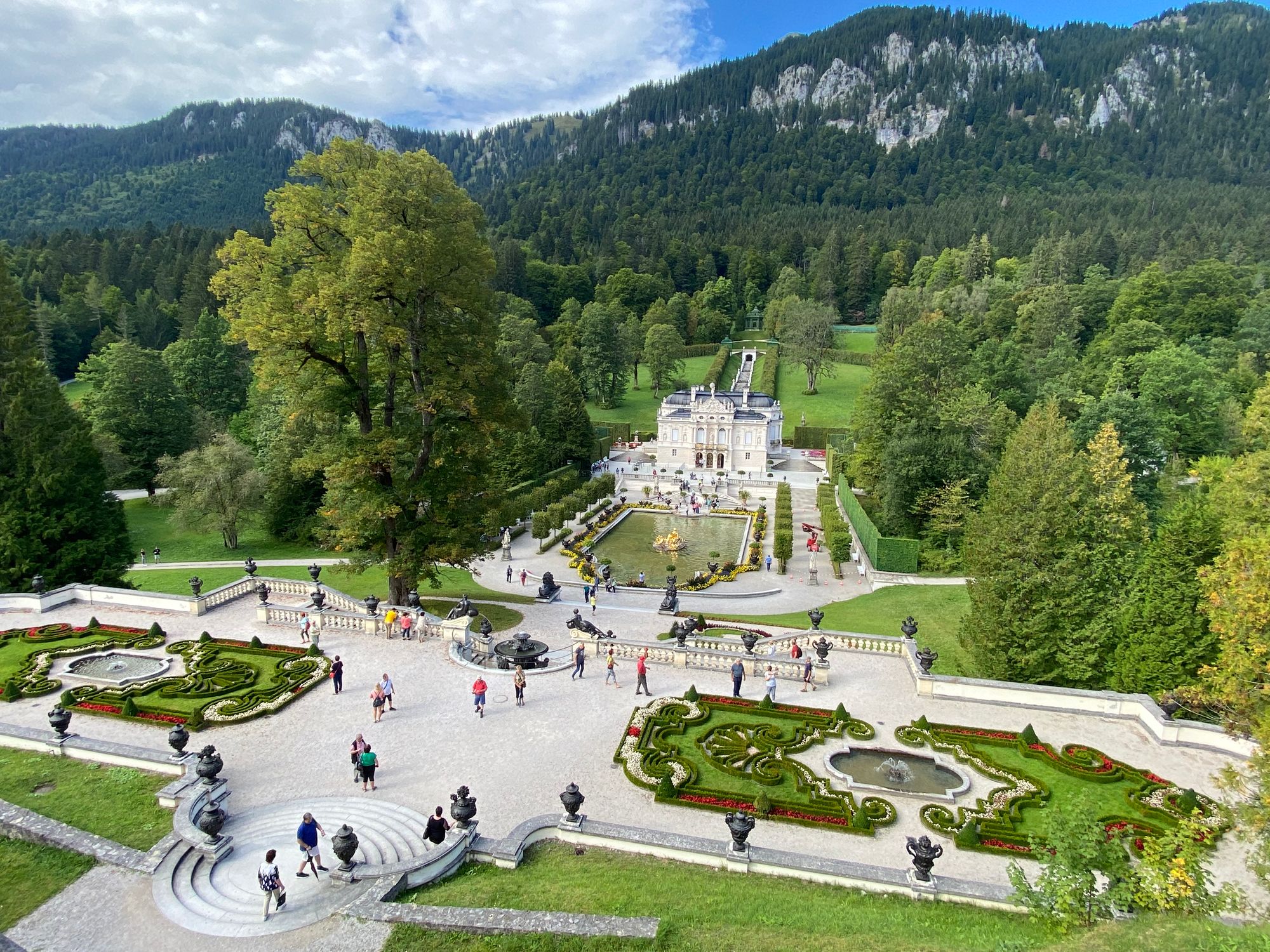
The Linderhof Palace itself, a renovated and expanded royal hunting lodge, is relatively modest in size. However the grounds surrounding the palace are a stunning and elaborate blend of formal gardens and blended forest landscapes.

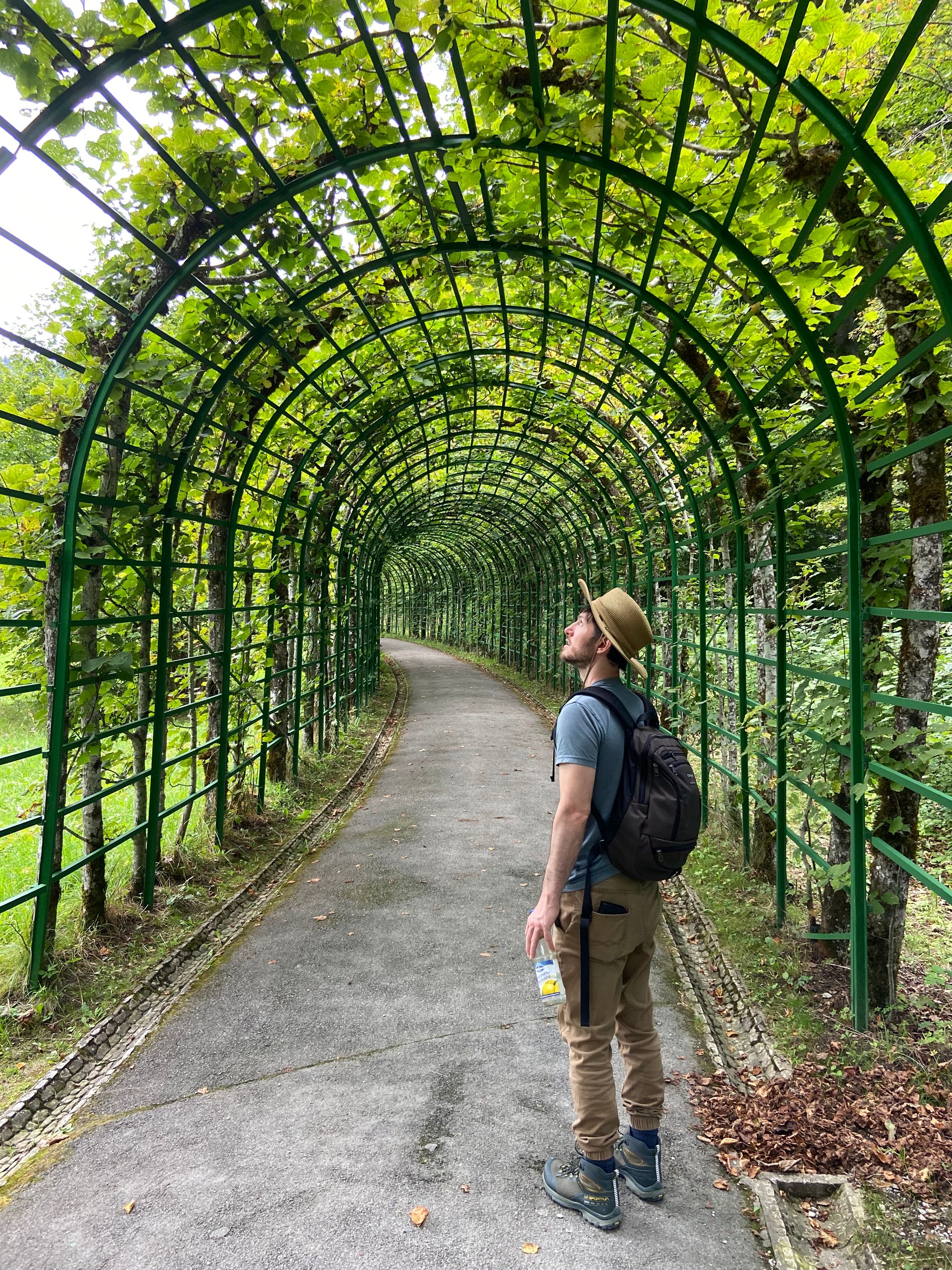
From Linderhof, we drove just under an hour to the most famous of Ludwig II's projects: Neuschwanstein Castle. Our drive actually took us through the corner of Austria along the very scenic Plansee lake and after a few map-based navigational challenges we arrived in the village of Hohenschwangau.

Neuschwanstein Castle is rumored to have served as one of the main inspirations for Disney's Cinderella Castle and you can definitely see it. The castle is perched on top of a rather steep hill with commanding views of the countryside below and the waterfall carved hills above.
Construction on the castle began in 1868 on the site of two medieval castles which had fallen into ruin. The castle is still technically incomplete although it was finished enough for Ludwig to live there for a just under 6 months before his forced abdication and death. It has been open to tourists since shortly after Ludwig's death as ticket revenue was needed to retire the substantial debt the project had accumulated and fund further work.
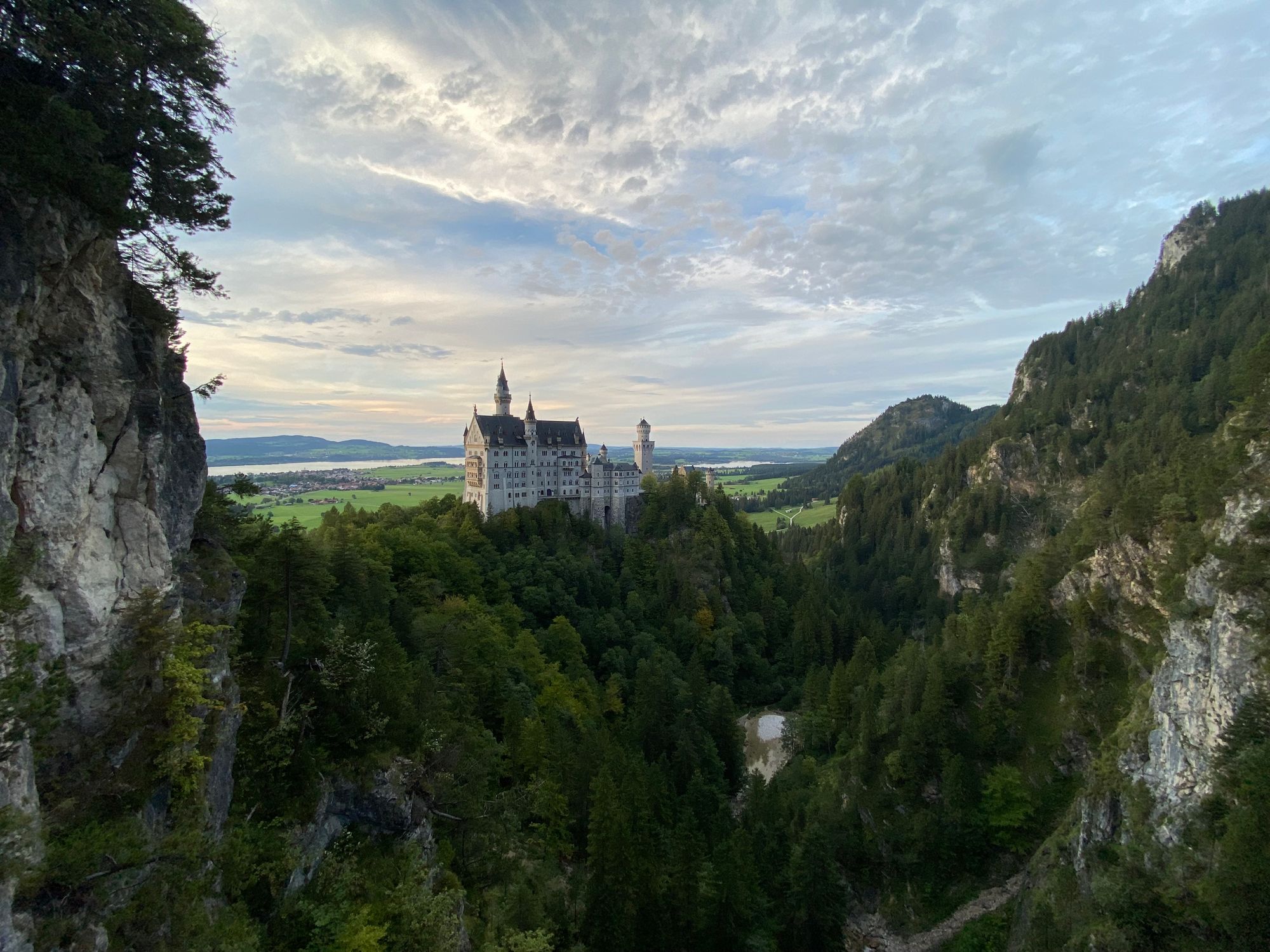
After a lovely late dinner at Gasthaus Zum Schwanen in the nearby town of Füssen, we drove back to Munich on some surprisingly narrow and twisty roads with a spectacular lightning storm in the distance. (A literal "dark and stormy night".) We were both relieved when we finally rejoined the Autobahn for the last 30 minutes into town.
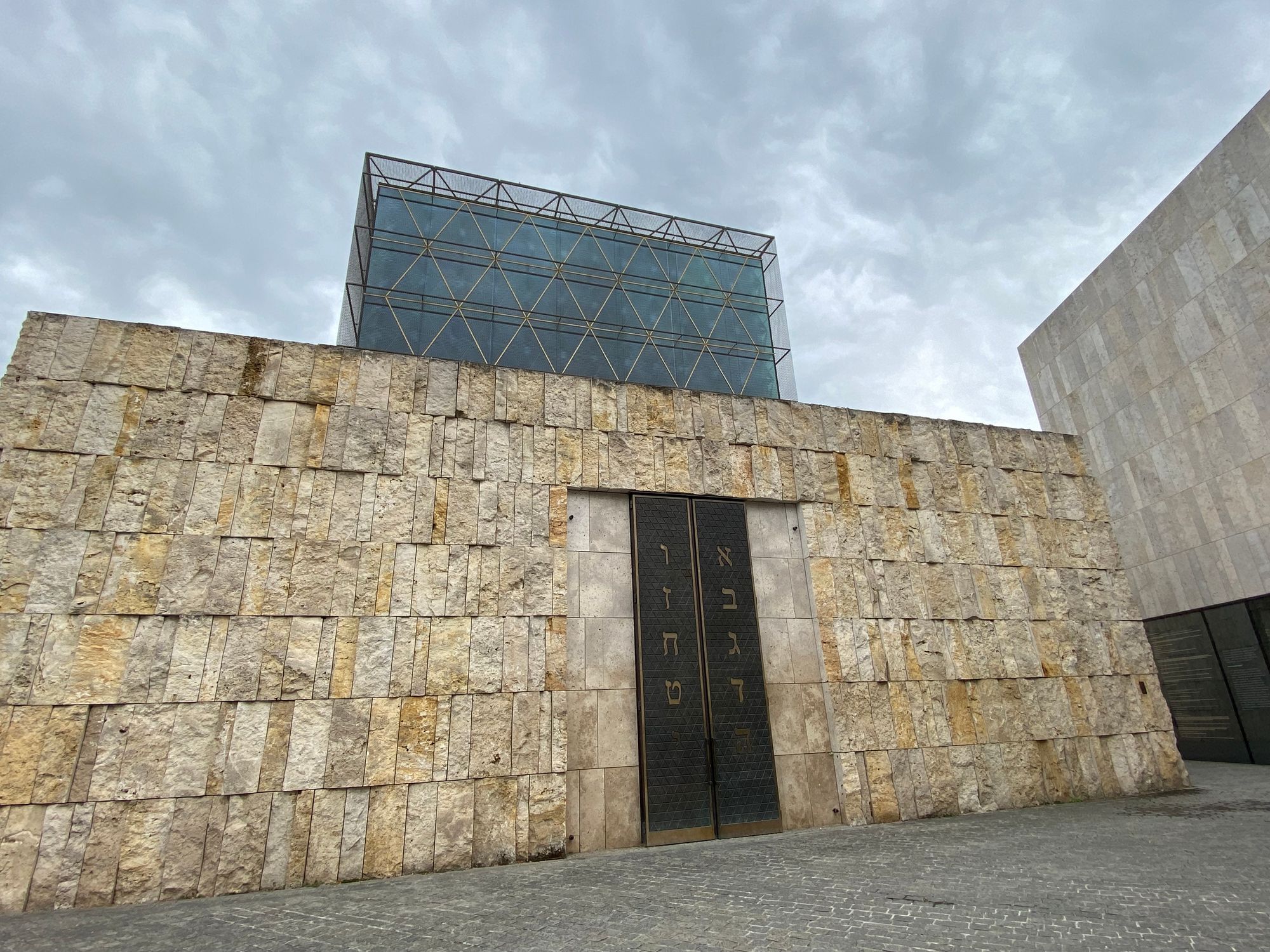
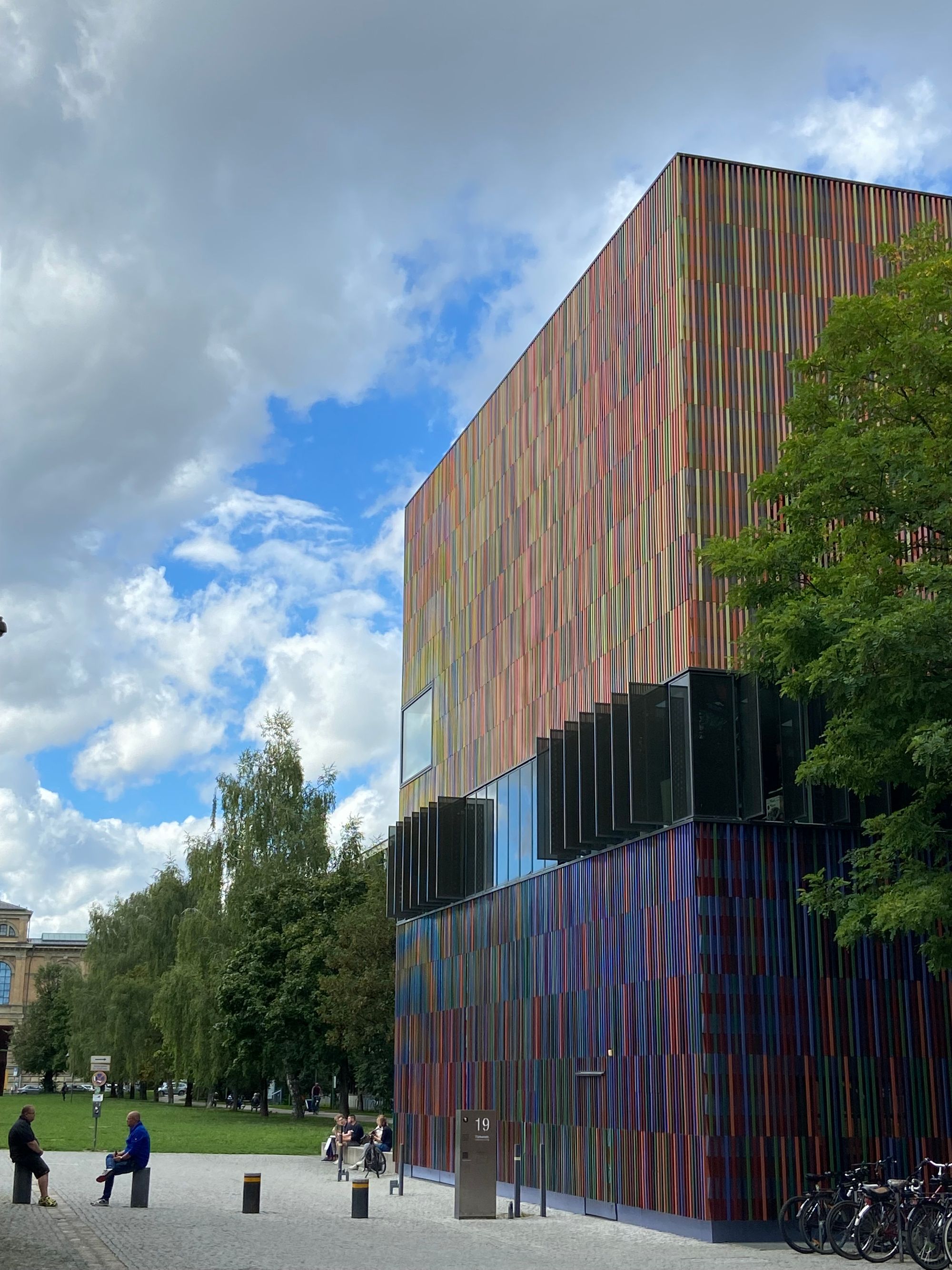
The next day was the last full day of our trip. I got up early and did some more exploration of the Munich city center along with a bit of souvenir shopping. By mid-morning we rendezvoused on some rental bikes and rode them north to the Munich Olympic Park, site of the tragic 1972 Summer Olympics. We didn't have much time to explore the facilities at the park, but it was nice to hike up to the top of the hill and take in the views.

From the park we biked back to our hotel, collected our bags and headed to the train station for one last train journey back up to Frankfurt. We spent the night in Frankfurt at the lovely Ameron Frankfurt Neckarvillen Boutique hotel (which has since changed hands or brands). One last hotel breakfast the following morning and it was off to Frankfurt Airport for our mid-day flight back to Portland.
Until next time!
